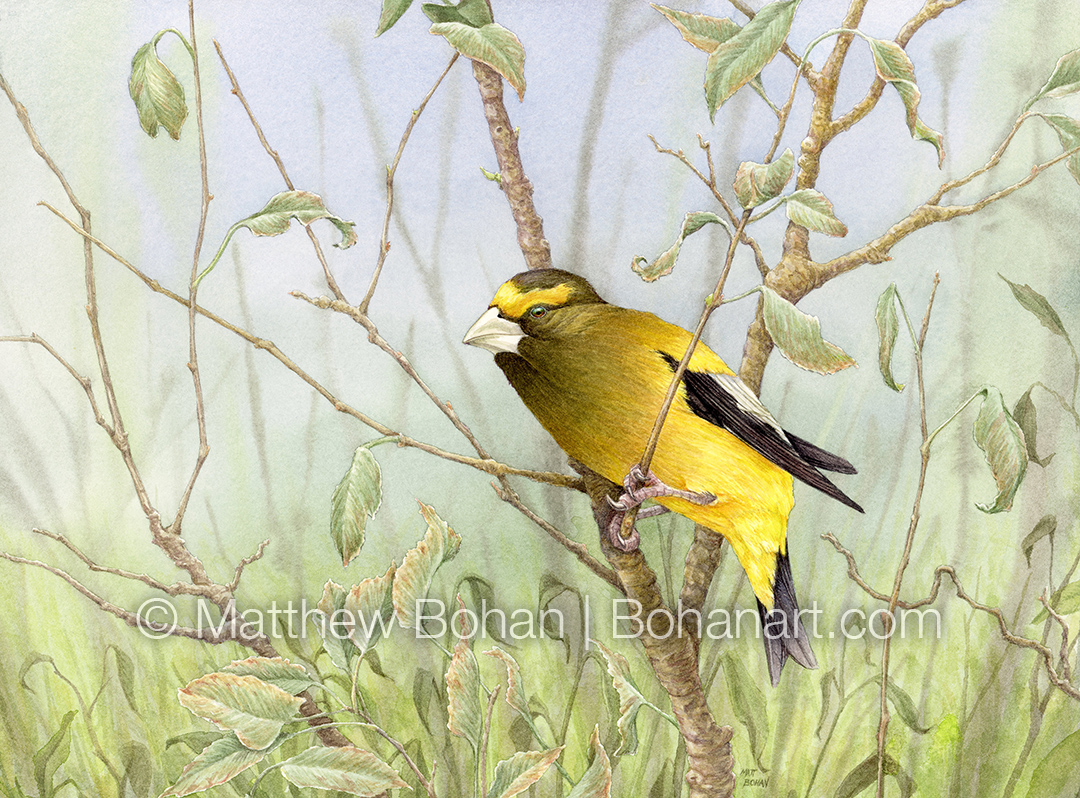
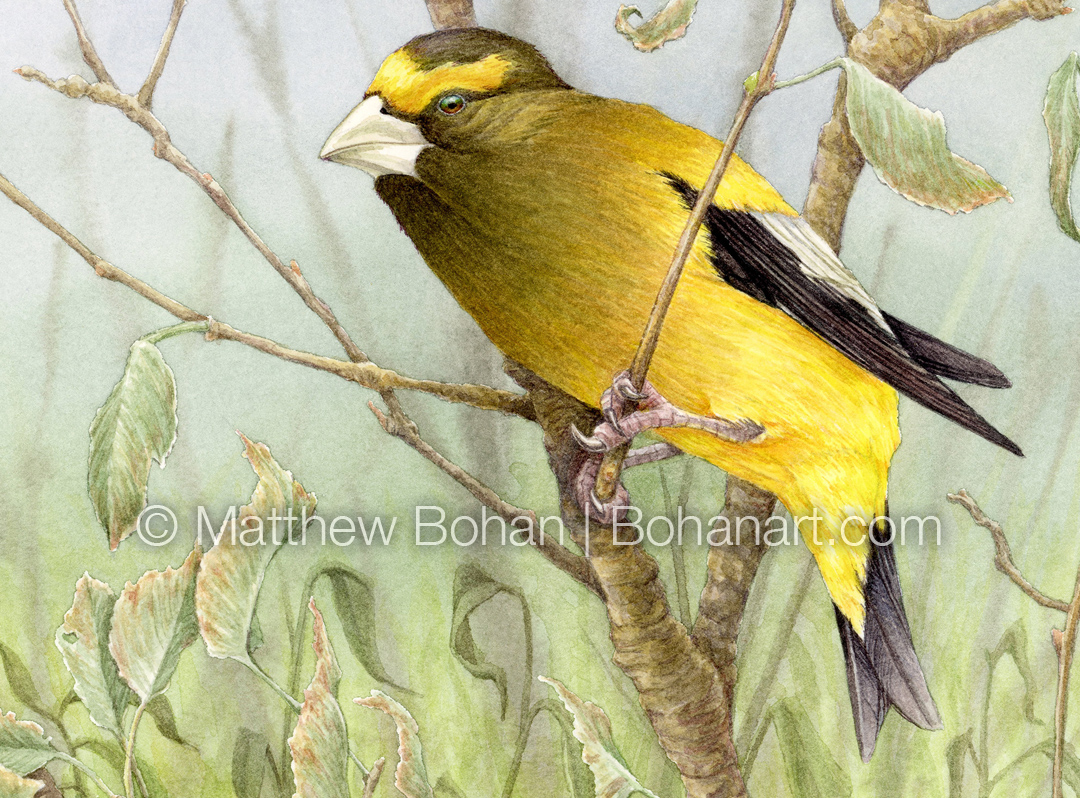
Evening Grosbeaks eluded me for a long time. My first sighting was with my wife at Whitefish Point in Michigan. We also had Boreal Chickadees for the first time. That was an exciting day!
Evening Grosbeaks are beautiful but somewhat strange in appearance. They feature stout bodies with gigantic heads and beaks, but they have tiny little eyes. The overall impression is kind of like that of a linebacker, perhaps in part because the male’s head pattern looks a bit like the football helmet of the University of Michigan Wolverines. The other odd thing is their coloration. Intense bright yellows are contrasted with some crazy orange-green dark browns that are both hard to describe and to accurately render.
In an effort to challenge myself and continue learning, I almost always try something new with every painting. For this one I wanted to try a less saturated palette. I’m drawn to intense color and contrast but was hoping to dial that back with the goal of having more subtlety.
When learning to identify birds, it always took forever to find the Evening Grosbeaks in my field guide. I always expected them to be by the Rose-breasted Grosbeaks and Blue Grosbeaks, but they weren’t. There are a whole bunch of birds in between the Pine Grosbeaks and Evening Grosbeaks and the Rose-breasted and Blue Grosbeaks. What’s going on? Well, despite all those birds being called grosbeaks, they aren’t all closely related. The Evening Grosbeaks and Pine Grosbeaks are true finches in the family Fringillidae, while the Rose-breasted Grosbeak, Northern Cardinals, Blue Grosbeaks, Indigo Buntings, Painted Buntings and Dickcissels are in the Cardinalidae family. I’m sure I’ll continue to look in the wrong place in my guides, because I’m unlikely to remember exactly which ones are more closely related. At least it’s helpful to know that the others are just a few pages away.
***
If you’d like to subscribe to my monthly newsletter for watercolor tips, techniques, resources and recommendations, sign up here.
If you’re interested in buying the original watercolor of this or another painting on this site, let me know. Prints, licensing and commissioned work are also available.
You can see more of my work on social media here.

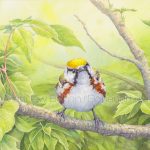
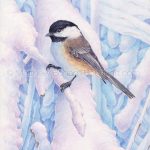

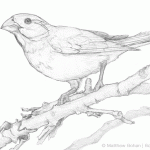
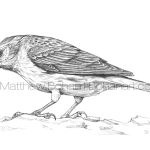
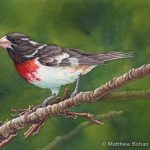
Leave a Reply